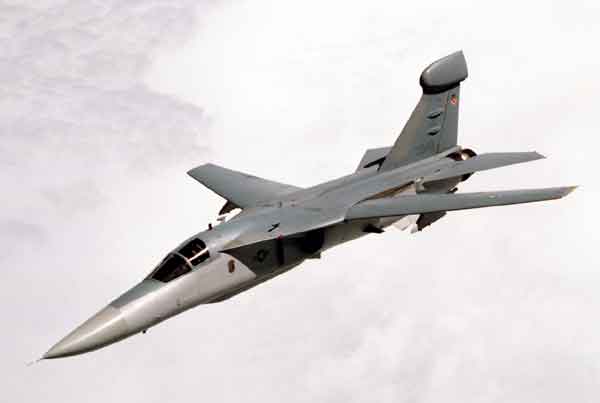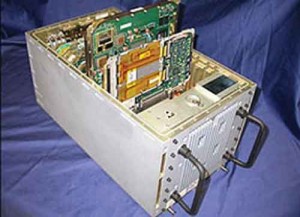Electronic Warfare (EW) is reckoned as one of the most technologically advanced branches of warfare today. Is it really so? In a world where electronic devices have invaded practically every field of human activity, tremendous vulnerabilities have arisen that are just waiting to be exploited by conventional and irregular forces alike. Many of the capabilities of the leading exponents of airborne EW like the USA and Israel, were fashioned decades ago. They were designed for a different threat, most importantly to jam high-powered ground radars. Nowadays, they suffer from a lack of flexibility and are expensive to deploy and the threats they were intended to counter have moderated in some parts of the world. Meanwhile, new dangers are multiplying.
The innovative tactics of insurgents and irregulars have sharply increased the variety and sources of low-tech asymmetric threats. Terrorists and jihadis have contributed to expanding the definition of hostile emitters to include low-power and low-band devices; even a commercial mobile phone cannot be ignored.
Even the USA, the worlds foremost military power, seems to be struggling to get to grips with a future fraught with stagnant airborne EW capabilities, shrinking budgets and a proliferation of threats.
From simple command-and-control equipment to advanced electronic attack devices, everything is becoming increasingly sophisticated yet easy to obtain off-the-shelf. This makes it an expensive and time-consuming proposition to locate, analyse and counter them.
Even the USA, the world’s foremost military power, seems to be struggling to get to grips with a future fraught with stagnant airborne EW capabilities, shrinking budgets and a proliferation of threats. Other countries that currently have far fewer EW assets are at still greater risk.
Global Threat
Perhaps nothing illustrates this better than the vulnerability of the Global Positioning System (GPS). GPS signals are feeble and easily interfered with. In March, strong jamming signals allegedly transmitted from North Korea succeeded in temporarily disrupting GPS services in Seoul. The electronic attack, purportedly, aimed at harassing the joint military exercises between South Korea and the US. Instead, it caused mobile phones and other electronic equipment to malfunction in Seoul and the adjoining areas. Such attacks can also interfere with the navigation systems of civilian aircraft and affect commercial and banking transactions.
The US government should be worried. Last November, it was reported that deliberate GPS disruption was becoming more common and that the systems in place to detect and counter jammers were insufficient. GPS jammers are illegal, but they are popular with truck drivers and others who try to prevent minute-to-minute tracking of their whereabouts. A hand-held GPS jammer can be bought through the Internet by truck drivers or jihadists—for as little as $30. A powerful enough jammer or a number of carefully coordinated smaller devices could dislocate GPS services over a large area. The US National Aeronautics and Space Administration (NASA) warned that the alarming rise in the availability of GPS jammers could have a devastating impact on national security. Yet, America is one of the few countries that already possess a military system able to spot GPS interference. The GPS Jammer Detection and Location (JLOC) system includes a network of receivers capable of detecting regions of higher-than-normal signal levels and low signal-to-noise ratios, either of which can signify interference. The size and accuracy of the system has been kept under wraps. But it may soon become necessary to deploy such methods on a large scale to protect against deliberate or accidental GPS interference.
EW is all about interference. According to Wikipedia, “Electronic warfare refers to any action involving the use of the electromagnetic (EM) spectrum or directed energy to control the spectrum, attack an enemy or impede enemy assaults via the spectrum. The purpose of electronic warfare is to deny the opponent the advantage of, and ensure friendly unimpeded access to the EM spectrum. EW can be applied from air, sea, land and space by manned and unmanned systems and can target communication, radar, or other services. EW includes three major subdivisions: Electronic Attack (EA), Electronic Protection (EP), and Electronic warfare Support (ES).” Readers in this part of the world may be more familiar with the terms Electronic Countermeasures (ECM) instead of EA; Electronic Counter-Countermeasures (ECCM) rather than EP and Electronic Support Measures (ESM) in lieu of ES.
America is one of the few countries that already possess a military system able to spot GPS interference.
According to Forecast International, nearly $25 billion will be spent globally on development of EW systems over the next decade. More than 37,000 ECM devices, radar warning receivers and other EW systems are likely to be produced by 2020.
Stealth versus Jamming
Yet, the current state of many major air forces, especially the USAF, seems to indicate a decline in active EW capability. For decades, the USAF’s main focus in the EA mission was defeating the networked radars and command-and-control systems that guide sophisticated surface-to-air missiles. However since 1997, when the EF-111 Raven fleet was retired without replacement, the force has lacked a dedicated platform for jamming radars. Perhaps it has no one to blame but itself. It poured billions of dollars into stealth technology in an attempt to make radar detection irrelevant.
But in 1999 Serbia shot down a stealthy Lockheed F-117 fighter, highlighting the need for effective jamming despite stealth technology. Stealth aircraft are becoming increasingly detectable by modern radars so airborne jammers are unlikely to disappear in a hurry. And what about the hundreds of non-stealthy aircraft whose very survival depends on jammers?
There are indications that the USAF is ready to remedy its neglect of EW and pursue advanced, long-range EA capabilities essential to penetrate the latest air defences. Its next bomber (expected 2024-26) will protect itself against enemy aircraft and air or ground-launched missiles with an EA weapon. This will probably be based on Active Electronically Scanned Array (AESA) technology which has the ability to detect small objects and differentiate among them. The same AESA radar or an additional one will also probably serve as a long-range, anti-electronic weapon to disable or degrade air defence surveillance and communications systems. The USAF will eventually operate about 150 of these “optionally manned” advanced bombers for about 50 years.
Stealth aircraft are becoming increasingly detectable by modern radars so airborne jammers are unlikely to disappear in a hurry. And what about the hundreds of non-stealthy aircraft whose very survival depends on jammers?
The US Navy seems more alive to the urgency of enhancing EW capabilities. The Next Generation Jammer (NGJ) is part of its current effort to refocus R&D on non-kinetic capabilities like information operations, network invasion and electronic attack. This will be its first all-new airborne jamming system since 1971, when the legendary AN/ALQ-99 entered service at the end of the Vietnam War. The NGJ (initial operational capability is expected 2018) is intended to counter advanced, integrated air defences, communications systems, data- links and non-traditional threats. With the EA-6B Prowler due to retire by 2012, the modular NGJ will enter service on the Boeing EA-18G Growler carrier-based EA aircraft, a specialised version of the F/A-18F Super Hornet. The NGJ transmitter will work together with Northrop Grumman’s ALQ-218 wide band Tactical Jamming Receiver which geo-locates emitters to guide onboard jammers; and Raytheon’s ALQ-227 Communications Countermeasures Set, for advanced communications jamming.
The NGJ, eventually planned for the F-35 Joint Strike Fighter and possibly a future UAV, will also feature a network invasion capability similar to Suter. This system which was demonstrated a few years ago by the USAF, creates a focused data-stream that can be filled with invasive algorithms and fired into the antenna of an integrated air defence system and its wirelessly linked missile launch vehicles. It has powerful sensors for detecting all types of electronic emissions, coupled with high speed computers and a large database of known threats. The system rapidly identifies the emitters and potential weak links in enemy communications networks. Its transmitters then monitor the enemy emitters, introduce misleading information, or shut them down.
Unmanned and Unparalleled
Unmanned Aerial Vehicles (UAVs) have proved their worth in West Asia and Afghanistan and are high on the shopping list of militaries worldwide. According to a recent report by ASD Reports, over 450 different types of UAVs are being fielded or developed by 49 countries. And if the Teal Group is right, the world UAV market will double over the next 10 years, totaling $94 billion. In its UAV Market Profile and Forecast 2011, the Group says UAVs have been the most dynamic growth sector of the world aerospace industry over the past decade. The UAV electronics market is also growing steadily, with especially fast growth and opportunities in synthetic aperture radar and signals intelligence/electronic warfare technology. Tactical and mini/micro/nano UAVs will offer some of the best EW opportunities over the next decade.
According to a recent report by ASD Reports, over 450 different types of UAVs are being fielded or developed by 49 countries. And if the Teal Group is right, the world UAV market will double over the next 10 years, totaling $94 billion.
The USAF, based on the experience in Afghanistan and Iraq, is going slow on big aircraft with big budgets and focusing on UAVs in the irregular warfare role first. It is looking to induct a “low-cost, rapidly deployable, counter-communications” system, an EW pod that can be integrated on UAVs as well as on manned fighters. The US Army earlier expressed interest in a similar capability for its General Atomics MQ-1C Gray Eagle UAV. The USAF is also acquiring a new miniature air launched decoy (MALD) which is designed to mimic the signatures of actual combat aircraft.
The goal for these decoys is to fool or confuse enemy air defences into going after the MALDs or to present them with many potential targets, sparing the actual combat aircraft. The Raytheon-built expendable system and a later variant known as MALD-J to jam air defence radar, is expected to be crucial in enabling strike aircraft to penetrate sophisticated enemy air defences in future battles. Overall, the Air Force intends to procure MALDs and MALD-Js in large numbers, possibly 3,000.
The Israeli Air Force too favours UAVs in the EW role. Israel Aircraft Industries (IAI) is a world leader in UAV technology. The Heron, its best-known product, is useful for strategic as well as tactical EW missions. An enhanced version, called Heron TP or Eitan, has also been developed. Now it is introducing a fresh line of tilt-rotor UAVs called Panther and Ghost. According to IAI sources, UAV-based EW and cyber warfare are a major emerging opportunity. Design goals will focus on how low-cost UAV systems can take on many different tasks and provide support to each other.
Libya is a third world country with relatively outdated assets. Think about China, which is rapidly upgrading its military including its cyber warfare and airborne EW potential and vigorously pursuing stealth and UAV-based EA capability.
These UAVs will have inbuilt EW capability, AESA technology and stealth. Quantity will be the main consideration in order to overwhelm enemy defences, the more UAVs fielded for a given investment the better. Israel’s Elbit Systems is another leading light of the global UAV market offering long-range drones like the Hermes 450 and the Hermes 900 that can carry a variety of EW and other payloads.
Consistency & Coordination Equals Capability
Basic EW equipment can now do things that earlier required very specialised electronic support equipment. Receivers are becoming more sensitive while transmitters add flexibility, power and broader frequency range. Digital RF Memory (DRFM) technology means that brute-force EA techniques are giving way to more sophisticated, precisely-targeted techniques. Broadband phased arrays are already indispensable because jamming systems have to cover a much broader frequency range than radars. The new generation of jamming and exploitation techniques will be driven by updated universal exciter modules. Further into the future there’s the prospect of integrating directed energy (DE) weapons like high-power microwave (HPM) and high-energy lasers (HEL) with jammers. This might make for not-so-soft kill.
![]() And UAVs are destined to assume a far greater responsibility for EW. Investments in UAV technology over the last three decades or so are now reaching fruition. With further advancements in this field, new EW missions will constantly emerge. UAVs are also a cost-effective way of keeping pace with evolving EW threats so the mounting pressure to save money on defence is likely to spur development and deployment of UAVs all over the world.
And UAVs are destined to assume a far greater responsibility for EW. Investments in UAV technology over the last three decades or so are now reaching fruition. With further advancements in this field, new EW missions will constantly emerge. UAVs are also a cost-effective way of keeping pace with evolving EW threats so the mounting pressure to save money on defence is likely to spur development and deployment of UAVs all over the world.
For some decades now, airborne EW has been afflicted by the “feast or famine” effect, either assigned high priority or practically ignored. But its promise can be fulfilled only if there’s consistent investment and a coordinated strategy so that EA capability can keep pace with the changing threat.
The enforcement of an air exclusion zone over Libya in March 2011 began with the deployment of EA aircraft against the Libyan air defences. The attacking US, British and French air forces succeeded in neutralising the threat in quick time. However, Libya is a third world country with relatively outdated assets. Think about China, which is rapidly upgrading its military including its cyber warfare and airborne EW potential and vigorously pursuing stealth and UAV-based EA capability.







I wonder for whom this article is meant. I found it full of jargon and typical of the military personnel’s perception of the state of the art technology in their respective expertise area, that is to say they go by reading glossy magazines and brochures on military hardware published by the western powers. It has been reported that a number of UAVs in the recent Afghan war were simply downed by anti-aircraft guns (supplied by Iran) and ground fire by the Islamic Jehadis there, and the US halted their UAV drone missions abruptly. Incidentally, tracker technology does not belong to the domain of EW.